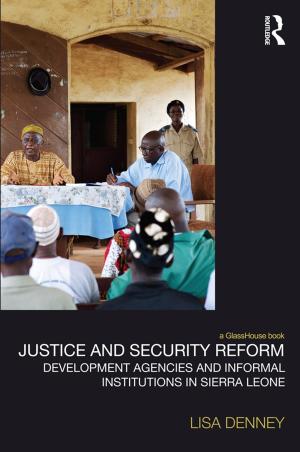Dinosaurs or Dynamos
The United Nations and the World Bank at the Turn of the Century
Business & Finance, Economics, Economic Development| Author: | Helge Ole Bergesen, Leiv Lunde | ISBN: | 9781134193851 |
| Publisher: | Taylor and Francis | Publication: | November 5, 2013 |
| Imprint: | Routledge | Language: | English |
| Author: | Helge Ole Bergesen, Leiv Lunde |
| ISBN: | 9781134193851 |
| Publisher: | Taylor and Francis |
| Publication: | November 5, 2013 |
| Imprint: | Routledge |
| Language: | English |
Explores how much and what the World Bank and the United Nations can really be expected to achieve. The text begins with a detailed account of the evolution of the two organizations as multilateral development institutions and then focuses on the functions that the World Bank and the UN carry out, and the governing structures that underlie their activities. The authors then go on to question what need there is for these two multilateral institutions in the next century and which tasks they can undertake in promoting world development. Both the United Nations (UN) and the World Bank have repeatedly proclaimed their solemn ambitions to improve the lot of humankind. Dinosaurs or Dynamos? explores how much, and what, they can really be expected to do. Both have extended their functions far beyond their original mandates, while their decision-making structures have remained basically unaltered despite recent adaptations on the part of the World Bank. Such expansions have created serious strains on both organizations. The UN has ambitions to perform tasks, such as the search for 'good governance' and 'sustainable development', for which it is ill equipped. The World Bank has taken on normative functions - 'the premier development institution' - that are incompatible with its traditional structures. The authors ask, what need is there for these two multilateral development institutions in the next century? Which tasks in promoting world development can they undertake that others cannot? To whom are these institutions politically accountable, who sets their agendas and are they credible given financial constraints? Dinosaurs or Dynamos? is an essential guide for those working within the international community, non-governmental organizations, governments and students of development, economics, politics and international relations.
Explores how much and what the World Bank and the United Nations can really be expected to achieve. The text begins with a detailed account of the evolution of the two organizations as multilateral development institutions and then focuses on the functions that the World Bank and the UN carry out, and the governing structures that underlie their activities. The authors then go on to question what need there is for these two multilateral institutions in the next century and which tasks they can undertake in promoting world development. Both the United Nations (UN) and the World Bank have repeatedly proclaimed their solemn ambitions to improve the lot of humankind. Dinosaurs or Dynamos? explores how much, and what, they can really be expected to do. Both have extended their functions far beyond their original mandates, while their decision-making structures have remained basically unaltered despite recent adaptations on the part of the World Bank. Such expansions have created serious strains on both organizations. The UN has ambitions to perform tasks, such as the search for 'good governance' and 'sustainable development', for which it is ill equipped. The World Bank has taken on normative functions - 'the premier development institution' - that are incompatible with its traditional structures. The authors ask, what need is there for these two multilateral development institutions in the next century? Which tasks in promoting world development can they undertake that others cannot? To whom are these institutions politically accountable, who sets their agendas and are they credible given financial constraints? Dinosaurs or Dynamos? is an essential guide for those working within the international community, non-governmental organizations, governments and students of development, economics, politics and international relations.















